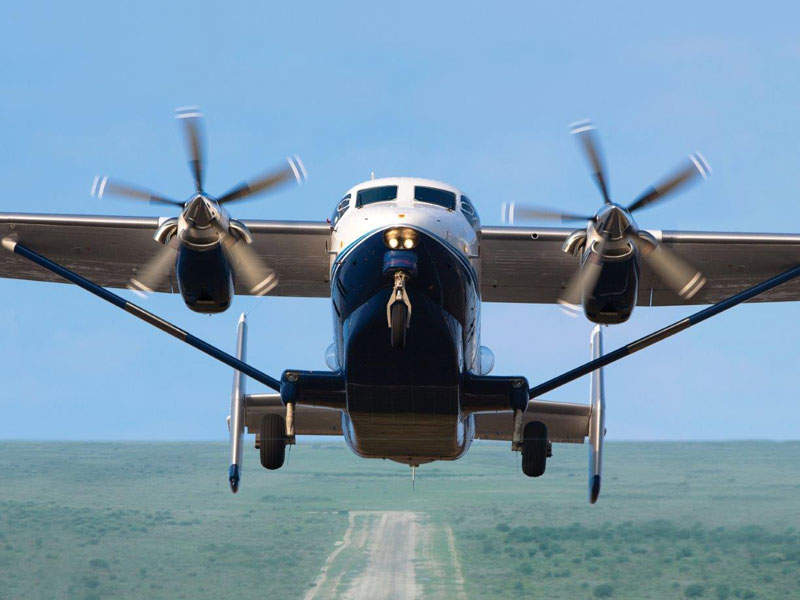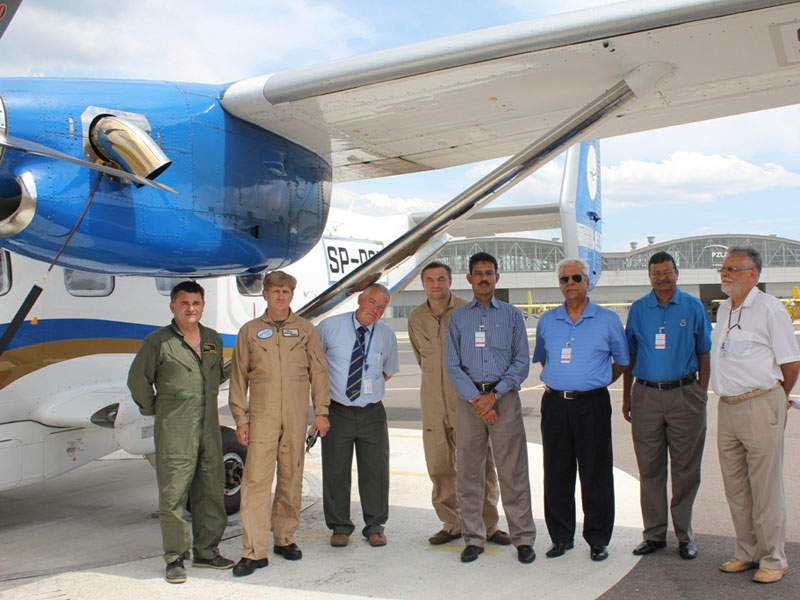The M-28 is a twin-engine turboprop aircraft intended for short take-off and landing (STOL) tasks. Developed by PZL Mielec Company, a business unit of Sikorsky Aircraft, the aircraft can perform cargo transport, parachuting operations, medical evacuation, patrol and maritime reconnaissance, as well as search and rescue missions.
The M-28 aircraft obtained the US Federal Aviation Administration (FAA) and European Aviation Safety Agency (EASA) type certifications in 2004 and 2005 respectively, followed by FAA and EASA certifications for flight in known icing conditions in August 2013.
It further obtained type certifications from the Indian civil aviation authority, the Director General of Civil Aviation (DGCA), in September 2016 and the Brazilian civil aviation authority, Agencia Nacional de Aviação Civil (ANAC), in November 2016.
The aircraft was displayed at the Latin American Business Aviation Conference and Exhibition (LABACE) in August 2016.
M-28 aircraft design and features
The aircraft has a semi-monocoque all-metal structure and features a fixed landing gear with low-pressure tires for unprepared airfield operations. It features a certified ice protection system.
The external dimensions of the aircraft include a length of 13.1m (43ft), height of 4.9m (16.08ft) and wingspan of 22.06m (72.38ft).
Twin-turboprop aircraft cockpit and avionics
The M-28 aircraft is fitted with a Honeywell Bendix/King KR 22 marker beacon receiver control and annunciator panel as well as radio and navigation equipment. The avionics include Garmin GTN 650 WAAS-certified GPS, ILS/VOR with localiser and glideslope, dual Honeywell Bendix/King EFS 50 electronic flight instrument system, and dual Litef LCR 100 attitude heading reference system (AHRS).
The aircraft features Honeywell Bendix/King KFC 325 auto flight control systems, KDC481T Air Data Computer (ADC), and Kannad 406AF emergency locator transmitter.
Dual airspeed and dual altimeter indicators are placed at the pilot and co-pilot instrument panels, while the safety equipment includes Honeywell Mk VI enhanced ground proximity warning system and mid-continent lifesaver backup attitude indicator with own battery.
The additional avionics fitted to the aircraft include a flight data recorder, FA2100 voice recorder, Mode S Transponder, RDR2000 weather radar, standard dual GPS system with precision approaches, and overseas rescue kit.
Cabin details of the M-28
The twin-turboprop aircraft accommodates up to 17 paratroopers or 19 passengers. The cabin dimensions include a length of 5.26m (17.25ft), width of 1.73m (5.66ft) and height of 1.72m (5.63ft). It has an optional underbelly cargo pod with an additional volume of 1,3m³ (46ft³). The cargo door is 2.6m long and 1.2m wide.
The cabin features 18-floor tie-downs, two-floor ANCRA rails, rear clamshell doors, and rear shelves. The aircraft can carry cargo weighing up to 2,300kg (5,070lb). It also features hot and cool air ventilation for the cabin and cockpit.
M-28 aircraft engine and performance details
The M-28 aircraft is powered by two Pratt and Whitney Canada PT6A-65B turboprop engines rated at 1,100shp each. The engines are driven by two HC-B5MP-3D five-bladed constant-speed propellers developed by Hartzell Propeller.
The aircraft has a maximum fuel load of 1,766kg (3,894lb) with average fuel consumption of 268kg/h (591 lb/h) and offers an endurance of 6.2 hours.
The operating speed of the aircraft is 355km/h (192k), stall speed is 120km/h (65k), and long-range cruise speed is 244km/h (132k). The range is 860nm (1,592km) with a maximum rate of climb of 12.29m/s (2,420ft/m), while the service ceiling is 7,620m (25,000ft).
The take-off distance required for the aircraft is 548m (1,800ft) and landing distance is 499m (1,640ft). The empty weight of the aircraft is 4,354kg (9,601lb), gross weight is 7,500kg (16,534lb) and payload carrying capacity is 2,300kg (5,070lb).






